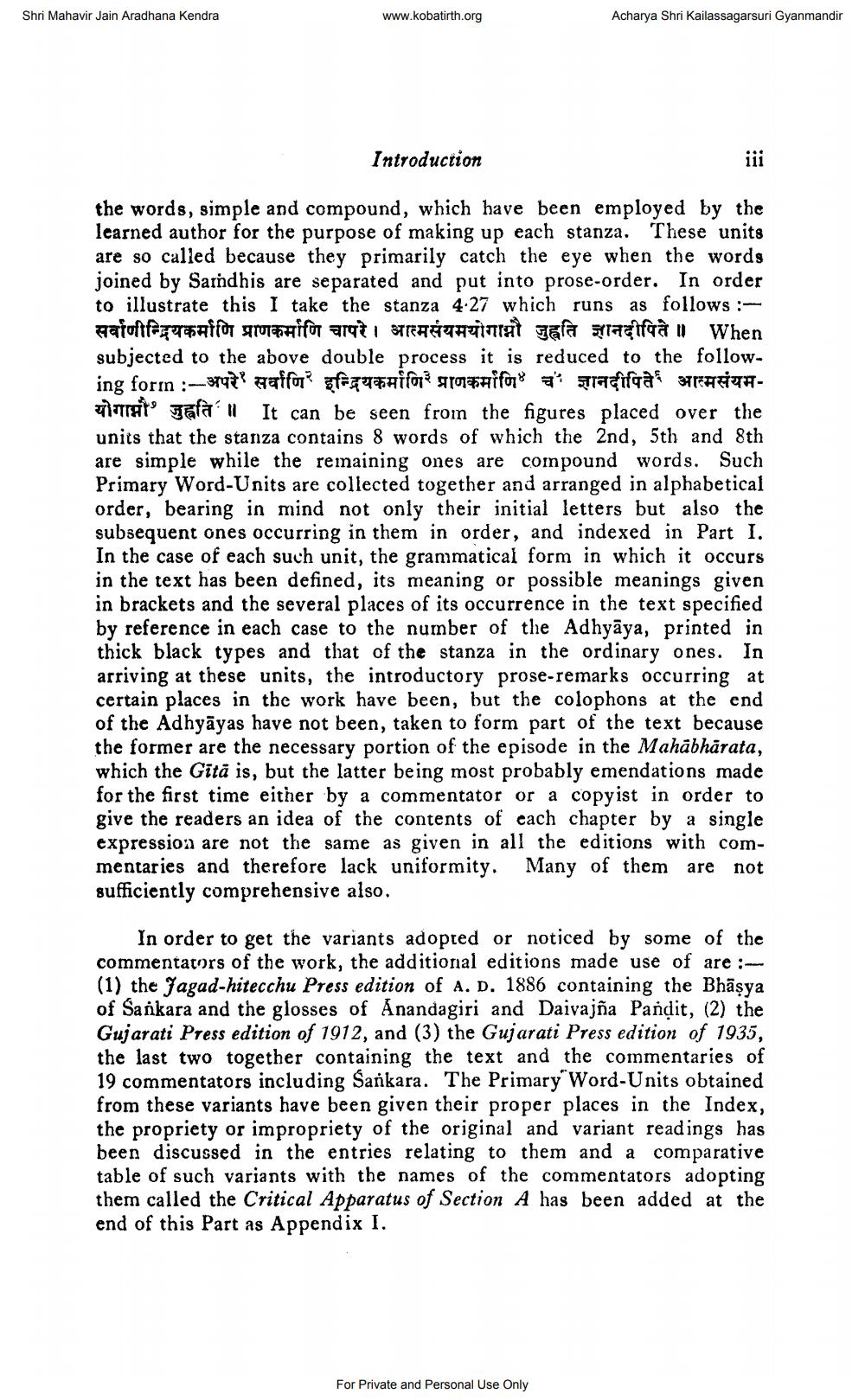________________
Shri Mahavir Jain Aradhana Kendra
www.kobatirth.org
Acharya Shri Kailassagarsuri Gyanmandir
Introduction
the words, simple and compound, which have been employed by the learned author for the purpose of making up each stanza. These units are so called because they primarily catch the eye when the words joined by Sarndhis are separated and put into prose-order. In order to illustrate this I take the stanza 4.27 which runs as follows:सर्वाणीन्द्रियकर्माणि प्राणकर्माणि चापरे। आत्मसंयमयोगानौ जुह्वति ज्ञानदीपिते ॥ When subjected to the above double process it is reduced to the following form :-अपरे सर्वाणि इन्द्रियकर्माणि प्राणकर्माणि च ज्ञानदीपिते आत्मसंयमयोगानी' जुह्वति ॥ It can be seen from the figures placed over the units that the stanza contains 8 words of which the 2nd, 5th and 8th are simple while the remaining ones are compound words. Such Primary Word-Units are collected together and arranged in alphabetical order, bearing in mind not only their initial letters but also the subsequent ones occurring in them in order, and indexed in Part I. In the case of each such unit, the grammatical form in which it occurs in the text has been defined, its meaning or possible meanings given in brackets and the several places of its occurrence in the text specified by reference in each case to the number of the Adhyāya, printed in thick black types and that of the stanza in the ordinary ones. In arriving at these units, the introductory prose-remarks occurring at certain places in the work have been, but the colophons at the end of the Adhyāyas have not been, taken to form part of the text because the former are the necessary portion of the episode in the Mahābhārata, which the Gitā is, but the latter being most probably emendations made for the first time either by a commentator or a copyist in order to give the readers an idea of the contents of each chapter by a single expression are not the same as given in all the editions with commentaries and therefore lack uniformity. Many of them are not sufficiently comprehensive also.
In order to get the variants adopted or noticed by some of the commentators of the work, the additional editions made use of are : (1) the Jagad-hitecchu Press edition of A. D. 1886 containing the Bhāsya of Sankara and the glosses of Anandagiri and Daivajña Pandit, (2) the Gujarati Press edition of 1912, and (3) the Gujarati Press edition of 1935, the last two together containing the text and the commentaries of 19 commentators including Sarkara. The Primary Word-Units obtained from these variants have been given their proper places in the Index, the propriety or impropriety of the original and variant readings has been discussed in the entries relating to them and a comparative table of such variants with the names of the commentators adopting them called the Critical Apparatus of Section A has been added at the end of this part as Appendix I.
For Private and Personal Use Only




